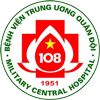Tên đề tài luận án: Nghiên cứu căn nguyên nhiễm trùng tiết niệu sau ghép thận và một số yếu tố liên quan đến rối loạn chức năng thận ghép.
Chuyên ngành: Gây mê hồi sức
Mã số: 972 01 02
Họ và tên nghiên cứu sinh: Hồ Trung Hiếu
Họ và tên Người hướng dẫn:
1. TS. Bùi Tiến Sỹ
2. PGS. TS Trần Hồng Nghị
Cơ sở đào tạo: Viện Nghiên cứu Khoa học Y Dược lâm sàng 108.
Tóm tắt những đóng góp mới của luận án:
Đây là công trình nghiên cứu có tính mới và không trùng lặp với các nghiên cứu khác về căn nguyên nhiễm trùng tiết niệu và các yếu tố liên quan đến rối loạn chức năng thận ghép của bệnh nhân sau ghép thận trong năm đầu tiên. Nghiên cứu đã nêu lên vấn đề nhằm xác định các căn nguyên nhiễm trùng tiết niệu của các đối tượng bệnh nhân sau ghép thận, dự phòng, điều trị phù hợp để giảm thiểu nguy cơ ảnh hưởng tới chức năng thận ghép, và tìm hiểu một số yếu tố liên quan đến rối loạn chức năng thận ghép có giá trị trong điều trị lâm sàng. Cụ thể là:
Nhiễm trùng đường tiết niệu xảy ra phổ biến ở bệnh nhân ghép thận trong năm đầu tiên với 102 đợt nhiễm trùng ở 37/94 bệnh nhân (39,3%). Nguyên nhân do vi khuẩn là 37,2% (cao nhất là vi khuẩn gram âm), nguyên nhân do virus là 2,12% (2/94 bệnh nhân). Chưa ghi nhận trường hợp nhiễm trùng đường tiết niệu do nấm gây ra. Tác nhân gây bệnh nhiều nhất trong năm đầu sau ghép thận là vi khuẩn gram âm Escherichia coli, chiếm 46% (47 ca nhiễm/102 đợt), vi khuẩn gram dương gây bệnh nhiều nhất là vi khuẩn Enterococus Faecalis, chiếm 18,6% (19 đợt nhiễm/102 đợt), tác nhân virus chiếm 1,9%, chỉ có 2 đợt nhiễm virus là Adenovirus gây ra tổng cộng 102 ca nhiễm trùng đường tiểu trong năm đầu sau ghép thận (2 đợt/102 đợt).
Tỷ lệ rối loạn chức năng thận ghép ở bệnh nhân sau ghép thận trong nghiên cứu này là 52,1%. Rối loạn chức năng thận ghép sớm xảy ra từ thời điểm được chăm sóc tích cực sau ghép thận cho đến 1 tháng (T1) với 11/94 bệnh nhân có dấu hiệu thải ghép cấp tính (11,7%). Tỷ lệ bệnh nhân rối loạn chức năng thận ghép cao nhất ở giai đoạn T1-T3 với 24/94 bệnh nhân (25,5%) có mức Creatinine tăng >15% so với mức ban đầu ở tháng thứ 3 (T3). Tỷ lệ rối loạn chức năng thận ghép giảm dần, thấp nhất sau 12 tháng (T12) với 12/94 bệnh nhân (12,8%). Rối loạn chức năng thận ghép xảy ra liên tục trong 12 tháng đầu sau ghép thận. Có 2 yếu tố liên quan độc lập (p < 0,05) đến rối loạn chức năng thận ghép ở bệnh nhân sau ghép thận, sắp xếp theo thứ tự chênh lệch giảm dần: Nồng độ đáy Tacolimus ≥ 5 ng/ mL (OR = 17,82); Người hiến nữ (OR = 9,60).
THE NEW MAIN SCIENTIFIC CONTRIBUTION OF THE THEIS
Name of thesis: Research on the causes of urinary tract infection after kidney transplant and some factors related to kidney transplant dysfunction.
Speciality: Anesthesia and resuscitation
Code: 972 01 02
Name of graduate student: Ho Trung Hieu
Name of supervisor:
1. Bui Tien Sy MD, PhD.
2. Associate Professor Tran Hong Nghi MD, PhD
Training facility: 108 Instiute of Clinical medical and Pharmaceutical Sciences.
Summary of new main scinetific contribution of the thesis:
This is a new study and does not overlap with other studies on the causes of urinary infections and factors related to kidney graft dysfunction in patients after kidney transplantation in the first year. The study has raised the issue of determining the causes of urinary infections in patients after kidney transplant, appropriate prevention and treatment to minimize the risk of affecting kidney transplant function, and find out more. Some factors related to kidney transplant dysfunction are valuable in clinical treatment. Particularty:
- Urinary tract infections occurred commonly in kidney transplant patients during the first year with 102 episodes in 37/94 patients (39.3%). Bacterial causes are 37.2% (the highest being gram-negative bacteria), viral causes are 2.12% (2/94 patients). There have been no recorded cases of urinary tract infections caused by fungi. The most pathogenic agent in the first year after kidney transplant is the gram-negative bacteria Escherichia coli, accounting for 46% (47 infections/102 episodes), the most pathogenic gram-positive bacteria is the bacteria Enterococus Faecalis, accounting for 18.6% (19 episodes/102 episodes), viral agents accounted for 1.9%, only 2 viral infections were Adenovirus causing a total of 102 urinary tract infections in the first year after kidney transplant (2 episodes/102 episodes) .
- The rate of kidney graft dysfunction in patients after kidney transplant in this study was 52.1%. Early kidney graft dysfunction occurred from the time of intensive care after kidney transplantation until 1 month (T1) with 11/94 patients showing signs of acute rejection (11.7%). The rate of patients with kidney graft dysfunction was highest in the T1-T3 period with 24/94 patients (25.5%) having Creatinine levels increased >15% compared to the initial level at month 3 (T3). The rate of kidney graft dysfunction gradually decreased, lowest after 12 months (T12) with 12/94 patients (12.8%). Kidney graft dysfunction occurs continuously in the first 12 months after kidney transplantation. There are 2 factors independently associated (p < 0.05) with kidney graft dysfunction in patients after kidney transplant, arranged in descending order of difference: Tacolimus trough concentration ≥ 5 ng/mL (OR = 17.82); Female donor (OR = 9.60).





